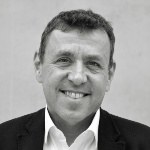Research and teaching in computer-oriented methods of nonlinear structural mechanics
The team of the Institute for Structural Mechanics conducts basic research in many areas of computational mechanics.
The research goals are strongly methodologically oriented with a focus on the finite element method and thin-walled structures (shells). The research topics cover a broad spectrum spanning many disciplines, from the development of models for the fully digital product development of sustainable electric drive architectures to methods for the co-design of fiber composite building systems and the design of adaptive load-bearing structures for buildings and bridges.
Teaching at the Institute for Structural Mechanics covers the scientific basics of structural mechanics and is thus intrinsically multi-material and multi-constructional. Methodically, it focuses on clarity and the relationship between load-bearing behaviour and calculation methods.
The continuous development of computer statics requires to constantly challenge and renew teaching contents and goals. The teaching software StaR2 (der StabwerksRechner) developed at the institute allows not only the quick control of manual calculations but also invites to experiment. Classical structural analysis methods are nowadays less needed for recalculation, but they are indispensable for reflection.
Contact:

Manfred Bischoff
Prof. Dr.-Ing. habil.Head of Institute

























